Breastfeeding mothers may often wonder how to determine if their expressed breast milk has gone bad, as it is essential to ensure that the milk given to their babies is safe and healthy.
Asking ‘How will I know if breast milk is spoiled’ will lead you to learn about the physical aspects of breast milk, how to conduct smell and taste tests, and following appropriate storage and thawing techniques, parents can confidently provide their babies with safe and nutritious breast milk.
Understanding the characteristics of fresh breast milk and recognizing the signs of spoilage can help parents make informed decisions and avoid feeding their little ones milk that might be harmful.
Breast milk is known for its numerous benefits, including providing optimal nutrition for the baby’s development and promoting the growth of a healthy immune system, but improper storage or handling can lead to spoilage.
Key Takeaways
- Recognizing the characteristics of fresh breast milk is essential for determining if it has spoiled.
- Performing a smell and taste test can help in identifying spoiled milk.
- Proper storage and thawing techniques are crucial to maintain the quality of expressed breast milk.
How Will I Know If Breast Milk Is Spoiled
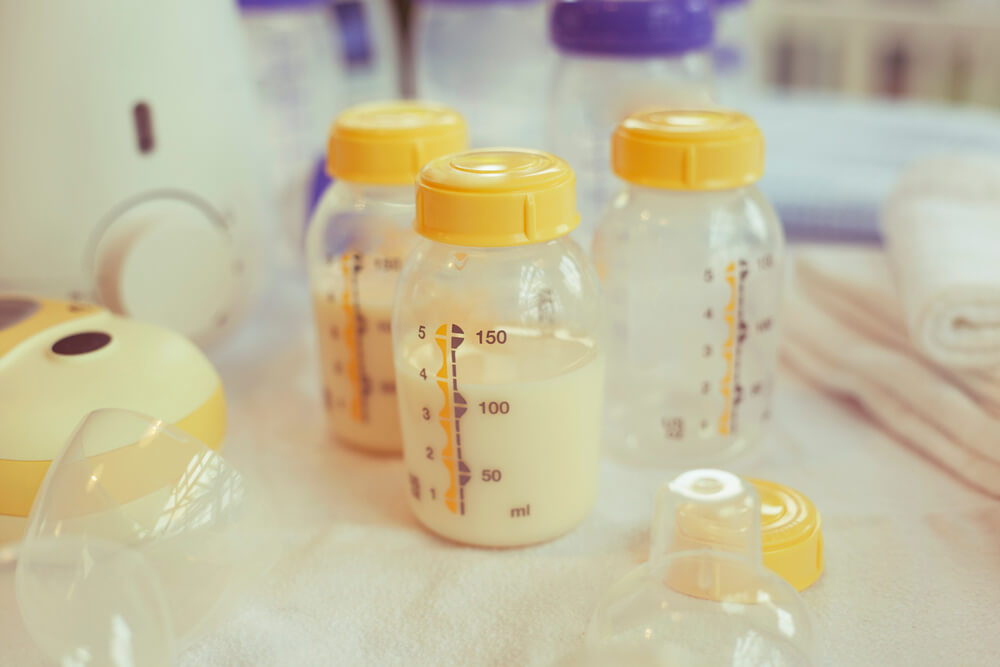
Breast milk is a remarkable substance that provides essential nutrients and antibodies for a baby’s growth and immune system development.
It is natural for breast milk to undergo changes in color, texture, and composition throughout the breastfeeding journey as it adapts to the baby’s dietary needs.
In general, freshly pumped breast milk has a sweet smell and taste. However, variations in the taste and smell of breast milk can occur, depending on the mother’s diet and individual body chemistry.
With these variations, it is important to recognize the possible signs of spoiled milk.
One way to determine if breast milk has gone bad is to check its appearance. Spoiled breast milk may appear clumpy or separated. Although normal breast milk can sometimes be separated into layers of cream and milk, a spoiled sample will have a thicker, chunkier consistency.
If you’re unsure about the milk’s freshness, give it a gentle swirl to mix the layers and observe any changes in texture.
Another indicator of spoiled breast milk is its smell.
When breast milk goes bad, it can have a sour or rancid odor, distinctly different from its usual sweet scent. Tasting a small amount can also help detect spoilage, as bad breast milk will taste sour.
Proper storage is crucial to maintain the freshness and quality of expressed breast milk. Keeping the milk in a clean, airtight container and following the recommended storage guidelines will help prevent spoilage.
Human milk can be safely stored in a refrigerator for up to 4 days and a freezer for up to 12 months under the correct conditions.
Understanding the characteristics of healthy breast milk and how to store it correctly will ensure that the baby receives optimal nutrition and benefits from this incredible natural resource.
Signs of Fresh Breast Milk
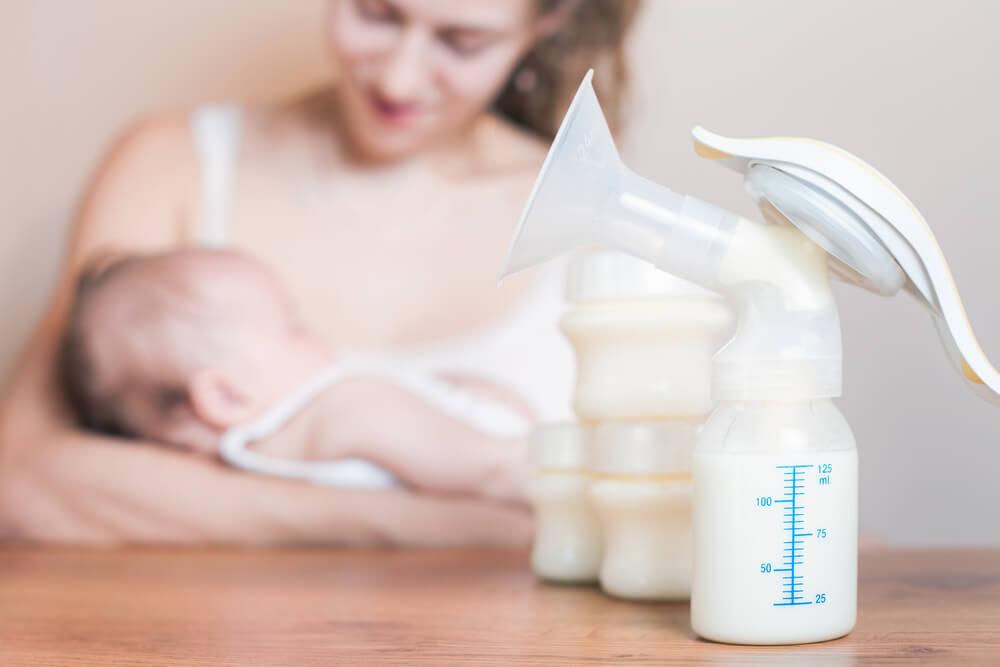
Breast milk is the best nutrition for a baby, so it’s essential to know whether the milk is fresh or spoiled.
Here are some indicators of fresh breast milk that you can look for:
1. Consistency and color: One of the first signs of fresh breast milk is its consistency and color. Healthy breast milk is usually thinner than cow’s milk and has a subtle blue or yellow hue. However, the color may vary depending on the mother’s diet and whether the milk is foremilk or hindmilk. It is essential to understand that small variations in color are normal and not a concern.
2. Smell and taste: Fresh breast milk usually has a mild, slightly sweet smell and taste. However, it is crucial to note that the smell and taste can vary for different mothers. The smell and taste can also change throughout the day and over time. If you are unsure, it’s a good idea to taste your milk before giving it to your baby, as you will be able to identify any abnormalities better.
3. Separation: After pumping, breast milk may separate into different layers, with the cream rising to the top. This separation is entirely normal and a sign that the milk is fresh. To recombine the milk, gently swirl the bottle before feeding it to the baby. Shaking the bottle is not recommended, as it can break down the milk proteins.
4. Temperature: Freshly pumped breast milk will be at room temperature. However, if you plan to store your breast milk, ensure that it is cooled in the refrigerator within two hours of pumping. If you need to use stored breast milk, warming it in a bottle warmer or warm water bath is recommended. Under no circumstances should microwaves be used to heat breast milk, as this can create hot spots that might burn the baby’s mouth and destroy essential nutrients.
By paying attention to these signs, you can ensure that your baby is consuming fresh and healthy breast milk that provides the best possible nutritional support.
Indicators of Spoiled Breast Milk

Breast milk is an essential source of nutrition for your baby, so it’s important to know when it has gone bad. There are a few key indicators to look for when determining the quality of your breast milk.
One of the most noticeable signs of spoiled breast milk is a change in its appearance. Fresh breast milk may have a slightly bluish or yellowish tint, while spoiled milk may appear clumpy, separated, or have a noticeable change in color.
Another reliable indicator of spoiled breast milk is its smell. Fresh breast milk typically has a sweet or mildly sour odor, but if the milk smells rancid or off, it’s likely spoiled. Trust your instincts; if the smell seems off to you, it’s better to be safe and discard the milk.
Finally, examine the taste of the breast milk. While taste can vary from one mother to another, fresh breast milk usually has a mild, slightly sweet flavor. Spoiled milk will have a noticeably sour or off-taste, which can indicate that it’s not safe for consumption.
To prevent breast milk spoilage, ensure you follow proper storage guidelines, such as keeping the milk refrigerated in airtight containers and using it within the recommended time frame.
In conclusion, regularly check the appearance, smell, and taste of your breast milk to ensure it remains fresh and suitable for your baby. By doing so, you can ensure your baby receives the best nutrition possible.
Physical Examination
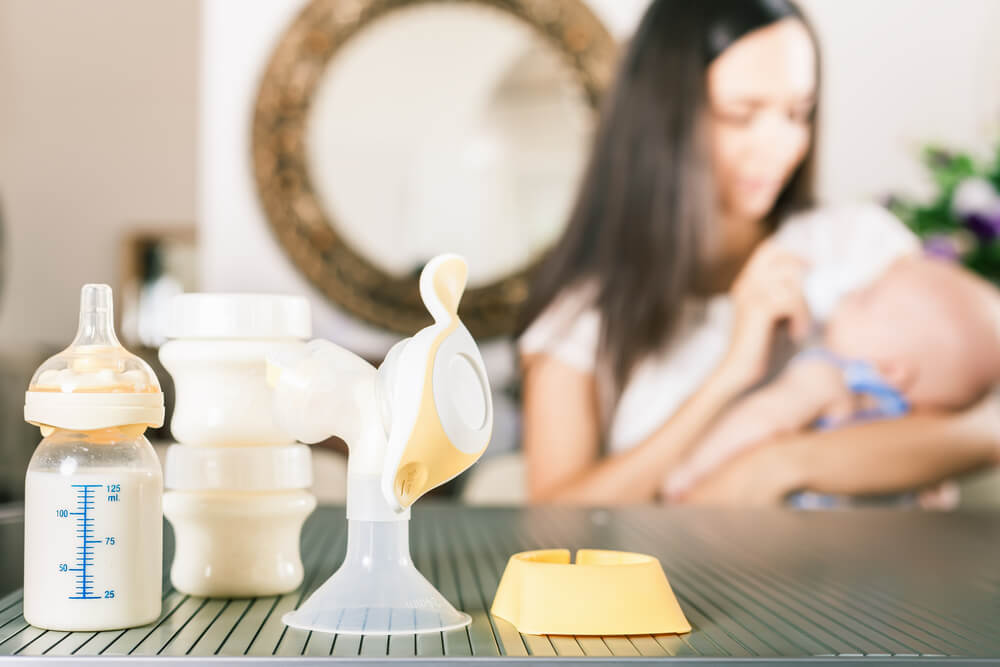
When trying to determine if breast milk is spoiled, a thorough physical examination can provide valuable clues. Observing the milk’s appearance, smell, and consistency can help you deduce its quality.
Breast milk may undergo some changes naturally over time, even when stored in ideal conditions. However, there are certain characteristics that suggest the milk is no longer suitable for consumption.
One such sign is the appearance. Fresh breast milk can be white, slightly yellow, or bluish, depending on the mother, but it tends to darken when it spoils. Be on the lookout for a significant darkening of the milk color compared to its original hue.
Another vital element to consider is the smell of the breast milk. Fresh breast milk usually has a mild, sweet scent. Spoiled milk, on the other hand, develops a sour or rancid smell, which differs significantly from its fresh state.
It is essential to familiarize yourself with the typical smell of your breast milk to better identify any changes indicating spoilage.
In addition to color and smell, the consistency of the milk can also provide useful information. When breast milk is spoiled, its texture may change, turning chunky or producing small clumps.
To test the milk’s consistency, gently swirl the container without shaking it, as shaking can cause the milk to separate naturally. If the milk doesn’t mix smoothly or forms noticeable chunks, it is most likely spoiled and should not be consumed.
Examining the breast milk’s appearance, smell, and consistency can serve as an efficient way to determine its quality. Careful evaluation can prevent feeding spoiled milk to a baby, promoting health and well-being.
Smell Test
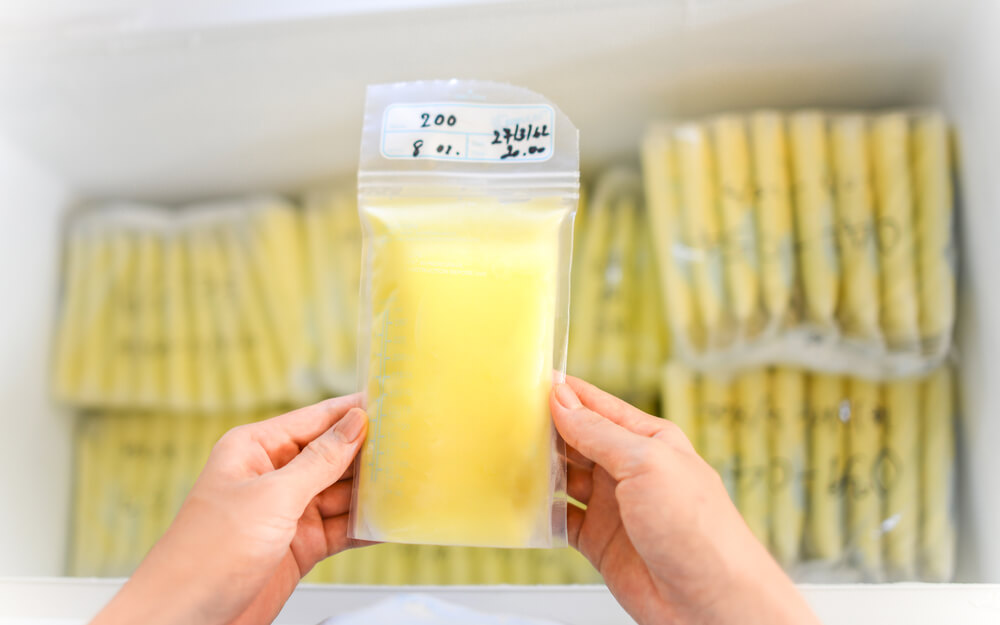
Performing a smell test can effectively help you determine if breast milk has spoiled. Fresh breast milk has a mild, sweet odor, which may vary slightly depending on the mother’s diet.
As the milk gets older or starts to spoil, it may develop a sour smell, similar to that of spoiled cow’s milk.
Before feeding your baby, it’s essential to take a moment to sniff the milk and check for any changes in its odor. Keep in mind that breast milk can sometimes have a slightly metallic or soapy smell due to the high content of lipase, a beneficial enzyme.
Do not mistake this natural scent for spoilage.
It’s crucial to store breast milk under proper conditions to preserve its quality.
Following the recommended storage guidelines can lessen the chances of spoilage. For instance, store freshly pumped milk in clean containers with airtight seals and follow the “rule of six“: up to 6 hours at room temperature, 6 days in the refrigerator, and 6 months in the freezer.
Checking for spoilage through the smell test ensures your baby receives the highest quality, healthy breast milk.
Remember that it’s always better to be cautious and discard milk with an off or sour odor to prevent any potential negative impacts on your baby’s health.
Taste Test
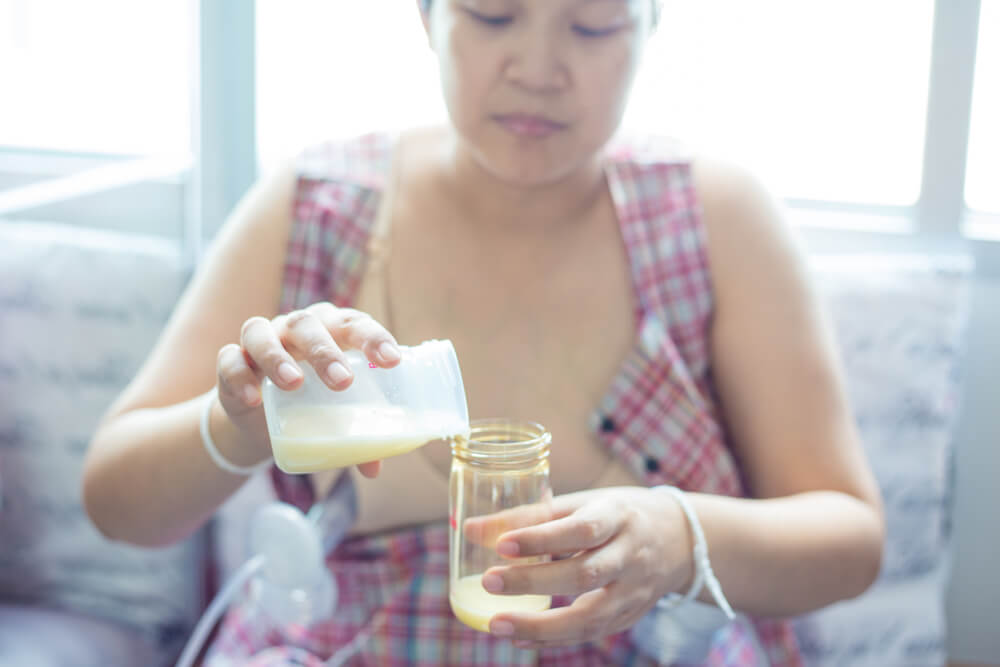
Breast milk can spoil just like any other food product, and knowing how to identify spoiled breast milk is essential for the health of the baby.
One reliable method to determine if the breast milk is spoiled is by conducting a taste test.
To perform a taste test, simply taste a small amount of the breast milk. Fresh breast milk generally has a slightly sweet taste and a subtle smell. If the breast milk tastes sour or has a rancid smell, it might have gone bad.
Nevertheless, it is important to note that the taste and smell of breast milk can vary from one mother to another and can change due to factors such as diet and medications.
In addition to the taste test, you can also check the breast milk for any visible signs of spoilage. Spoiled breast milk can become clumpy and can have a different texture compared to fresh breast milk.
If you notice these signs, it is best not to feed it to your baby.
Following safe storage recommendations can help prevent breast milk spoilage. This involves storing breast milk in the refrigerator for up to 72 hours (ideal) and in the freezer for 3-6 months.
By adhering to these guidelines and regularly performing a taste test, you can ensure that your baby receives fresh and healthy breast milk.
Remember that observing the baby’s reaction after consuming breast milk can also help in identifying spoiled milk. If the baby refuses to drink, spits out, or vomits after consuming the breast milk, it might be an indication that the milk has gone bad.
In such cases, always check for the signs discussed earlier and avoid feeding the baby potentially spoiled breast milk.
How to Store Breast Milk Properly
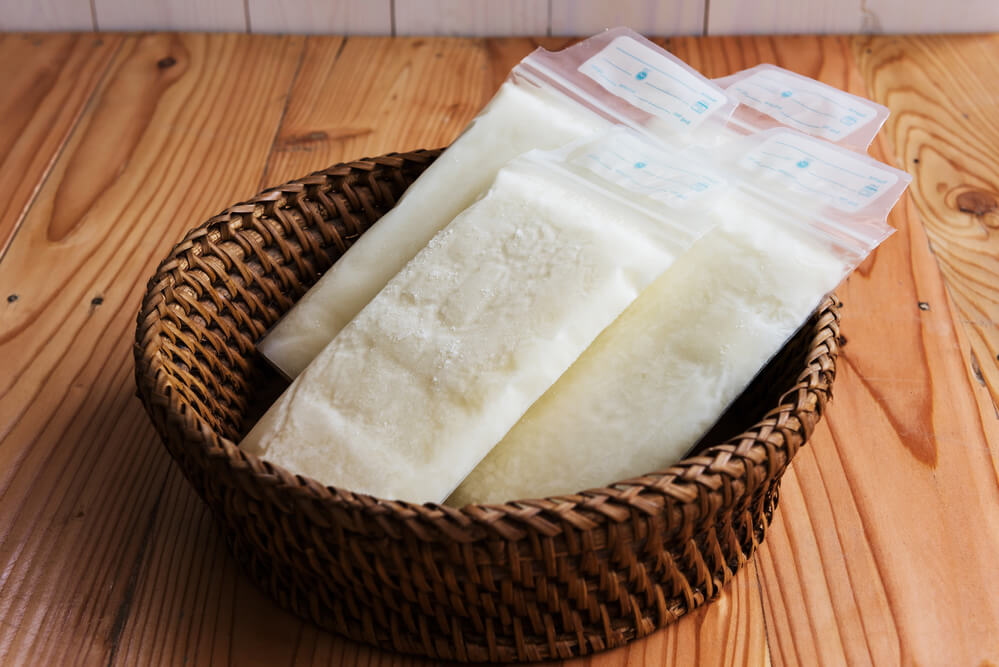
Storing breast milk correctly is essential for maintaining its quality and ensuring the safety of your baby.
To keep breast milk fresh, it is important to follow these guidelines.
First, always label the breast milk with the date it was expressed. This makes it easier to track which batch should be used first, using the “first in, first out” method. Ensure that the storage containers are clean and made of either glass or BPA-free plastic materials.
Freshly expressed breast milk can be stored at different temperatures depending on the amount of time you plan on keeping it. At room temperature, breast milk can safely be stored for up to six hours.
Yet, it is optimal to use or properly store the breast milk within four hours, especially if the room is warm.
For storage in a refrigerator, breast milk can be kept for up to four days. It is best to store the milk in the back of the fridge, as it is the coldest part and less prone to temperature fluctuations compared to the door compartments.
Alternatively, breast milk can be stored in a freezer for an extended period. It is advised to freeze the milk right away if you don’t think it will be used within four days. Frozen breast milk can last up to six months in a regular freezer and up to 12 months in a deep freezer.
When you are ready to use stored breast milk, it is important to heat it safely and evenly. Place the sealed container in a bowl of warm water or hold it under warm, running tap water. After heating, gently swirl the milk to mix the fat, which may have separated.
Adhering to these guidelines will help ensure the quality and safety of your stored breast milk. Proper storage and handling are crucial for the well-being and development of your baby.
Proper Thawing Techniques
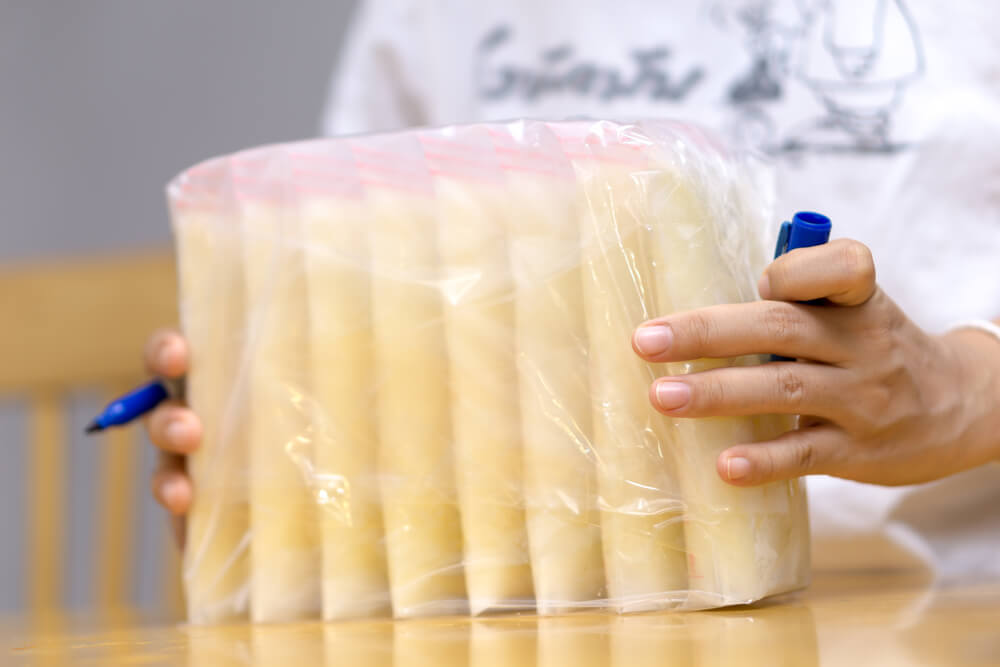
Proper thawing of stored breast milk is important to maintain its safety and quality. There are several methods to thaw breast milk effectively and safely.
One common method is to place the frozen milk in the refrigerator overnight. This allows it to thaw gradually, and once thawed, it can be left in the fridge for up to 24 hours before being consumed.
Another option is to thaw milk under warm running water or in a warm water bath. It is crucial not to use hot temperatures, as this can damage the milk’s nutritional components. Gently swirling the container can help mix fat that may have separated during freezing.
Using a bottle warmer is also a feasible technique to thaw breast milk. Be sure to follow the instructions of the specific bottle warmer for optimal results.
Avoid using a microwave to thaw or heat breast milk as it can create hot spots that could burn the baby’s mouth and unevenly warm milk, potentially destroying its nutrients.
In summary, implement proper thawing techniques to ensure that the stored breast milk is safe and optimally nutritious for the baby.
Key Takeaways
Breast milk can spoil if not stored or handled properly, so it’s essential to know the signs of spoilage. While the color and texture of breast milk may change over time, these are not necessarily indicators of spoilage.
Here are a few key points to consider when checking if breast milk has gone bad:
- Storage guidelines: To maintain its quality, breast milk should be stored in appropriate conditions. Ideally, it can be kept at room temperature for up to 4 hours, in the refrigerator for up to 72 hours, and in the freezer for 3-6 months.
- Aroma: The odor of breast milk can vary among mothers and even across feeding sessions due to factors such as diet and medications. An off or soapy smell might occur for mothers with high lipase-containing breast milk, in which case determining spoilage is not easy.
- Testing for spoilage: To determine if breast milk has gone bad, freshly expressed milk can be used as a comparison. If the stored milk doesn’t mix well and forms small chunks, or if it develops a darker color and off smell, it likely has spoiled.
- Reactions to spoiled milk: In rare cases, babies may develop fever or diarrhea if they accidentally consume spoiled breast milk. It is essential to keep an eye on your baby’s health and consult a doctor if any unusual symptoms occur.
To prevent breast milk from spoiling, always maintain proper storage and handling practices. By doing so, you can ensure that your baby receives nutritious and fresh breast milk.
Frequently Asked Questions
What are the signs of spoiled breast milk?
Spoiled breast milk can have several telltale signs. One common indicator is a sour or rancid smell, different from the milk’s normal odor. In addition, the milk may have a change in color or texture, and it may have clumps or a layer of fat separate from the milk.
When in doubt, it is always best to err on the side of caution and discard any suspect breast milk.
How can I tell if breast milk has gone bad in the freezer?
Frozen breast milk can also go bad, though it typically has a longer shelf life. When thawing frozen milk, give it a sniff test to check for any sour or rancid odors, as well as changes in color or consistency.
If it smells off, it’s best to discard it and use a fresh batch for your baby.
What does high lipase breast milk indicate?
High lipase breast milk has increased levels of lipase, an enzyme that breaks down the fats in milk. Some mothers naturally produce milk with higher lipase levels, which can lead to a soapy or metallic taste after storing the milk for a while.
While the taste and smell may be different, high-lipase breast milk is still safe for your baby to consume.
How long does it take for breast milk to spoil?
The amount of time it takes for breast milk to spoil depends on storage conditions and temperature. Freshly pumped milk can be stored at room temperature for up to four hours, in the refrigerator for up to four days, and in the freezer for up to six months.
To ensure your baby is consuming safe milk, always follow proper storage guidelines and monitor for any signs of spoilage.
What happens if a baby drinks spoiled breast milk?
If a baby consumes spoiled breast milk, they may experience symptoms such as vomiting, diarrhea, or a mild stomach upset. Although these symptoms can be concerning, they usually resolve on their own.
However, if you suspect your baby is reacting poorly to spoiled milk, contact your healthcare provider for further guidance.
How can I prevent high lipase in breast milk?
Although there isn’t a concrete method to prevent high lipase in breast milk, some mothers find that scalding their milk before storage can help to inactivate the lipase and preserve the taste.
To scald breast milk, heat it gently in a saucepan until small bubbles form around the edges; do not let it boil. Then, quickly cool it and store it according to the recommended guidelines.
To see if it helps, you can test a small amount before committing to scalding all your breast milk.














